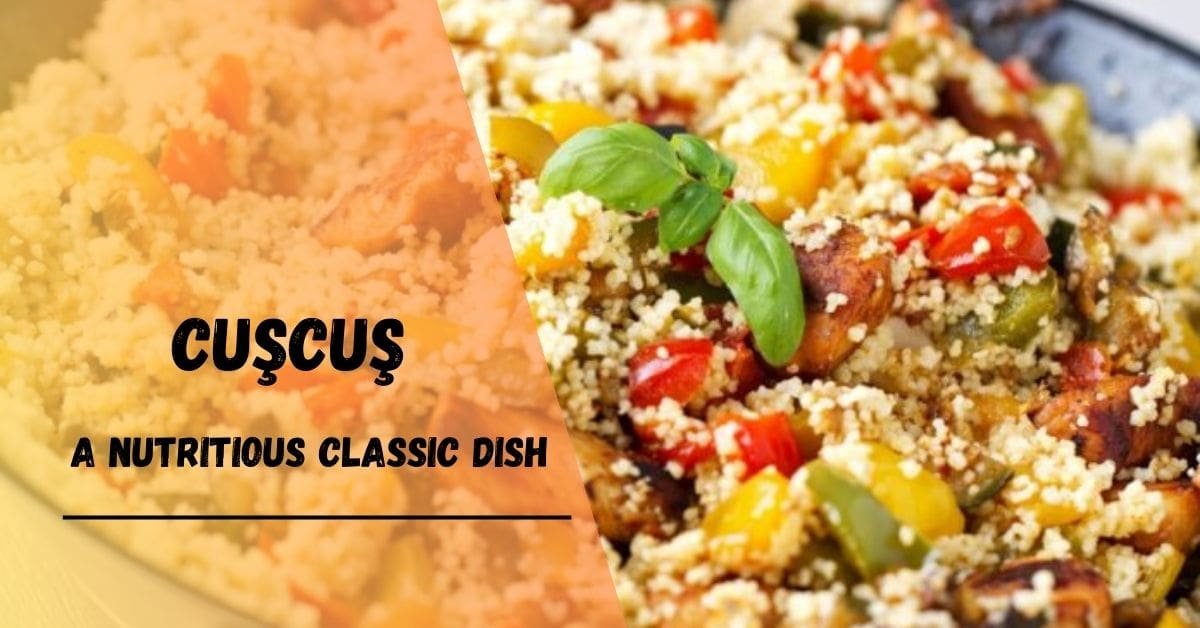Dönrt is a traditional Turkish pastry known for its flaky texture and versatile fillings. Whether sweet or savory, it’s a beloved treat often served at celebrations and family gatherings. Discover the rich flavors and cultural significance of dönrt in Turkish cuisine.
What is Dönrt? – Detailed Answer Here!
Dönrt is a traditional Turkish pastry that combines a rich history with delightful flavors and textures. The name “dönrt” is derived from the Turkish word “dört,” meaning “four,” which may refer to the four-fold shape of the pastry or the four key ingredients typically used in its preparation. This unique dessert is celebrated for its flaky, buttery layers and savory or sweet fillings, making it a beloved treat in Turkish cuisine.
What is The Origin of Dönrt?
Dönrt has its origins in the Anatolian region of Turkey, where culinary traditions are deeply rooted in history. Passed down through generations, the recipes for dönrt have evolved, reflecting local tastes and available ingredients. This pastry is a testament to Turkey’s rich culinary heritage and the diverse influences that have shaped its cuisine over centuries.
Why is Dönrt Popular?
Cultural Significance of Dönrt:
Dönrt is more than just a pastry; it holds significant cultural value in Turkish society. It symbolizes abundance and hospitality, often prepared for special occasions and celebrations. The communal act of making and sharing dönrt reinforces social bonds and showcases the warmth and generosity of Turkish culture.
Social and Festive Role of Dönrt:
During festive seasons, dönrt is a staple at gatherings and celebrations. It is traditionally prepared in large quantities, shared among family and friends, and serves as a focal point of communal feasting. The preparation and enjoyment of dönrt during these times highlight its role in fostering a sense of community and preserving cultural traditions.
How to Make Dönrt at Home? – Get the Recipe!
Ingredients Needed:
| Ingredient | Quantity | Description |
| Flour | 2 cups | For the dough base |
| Water | 1 cup | To mix with flour |
| Butter | 1/2 cup | Melted, for richness |
| Sugar | 1/2 cup | Sweetens the filling |
| Semolina | 1 cup | Adds texture to the filling |
| Nuts (Pistachios or Walnuts) | 1/2 cup | Chopped, for added crunch |
| Honey or Syrup | As Needed | For drizzling over the pastry |
Step-by-Step Preparation Of Dönrt – Try It Yourself!
Preparing the Dough
To make dönrt at home, start by preparing the dough. Mix the flour and a pinch of salt with water to form a smooth dough. Knead the dough thoroughly and let it rest for about 30 minutes. This resting period allows the gluten to develop, making the dough easier to work with and resulting in a flakier texture.
Cooking the Filling
For the filling, melt the butter in a pan over medium heat. Add the semolina and sugar, stirring continuously until the mixture turns golden brown. This process enhances the nutty flavor of the semolina. Once golden, add the chopped nuts and mix well. Allow the filling to cool before using it to fill the dough.
Assembling the Pastry
Roll out the rested dough on a floured surface until it is thin. Cut the dough into small squares. Place a spoonful of the cooled filling in the center of each square. Fold the squares into desired shapes, ensuring the filling is well enclosed. This could be a triangular or square shape, depending on preference.
Baking or Frying
For a traditional finish, bake the dönrt in a preheated oven at 180°C (350°F) until golden brown. Alternatively, you can pan-fry the pastries in a bit of butter until they are crispy and golden on both sides. Baking gives a lighter, flakier texture, while frying offers a rich, crispy finish.
Serving
Once cooked, dönrt can be drizzled with honey or syrup for added sweetness. Serve warm or at room temperature. This pastry is perfect as a dessert or a special treat during celebrations, embodying the flavors and traditions of Turkish cuisine.

Which Variations of Dönrt Exist?
Modern Variations of Dönrt:
Contemporary chefs have created various modern twists on dönrt to cater to diverse tastes and dietary preferences. These include vegetarian and vegan versions, using plant-based ingredients like chickpeas or lentils for the filling. Additionally, some chefs incorporate whole grains and different nuts to enhance the nutritional value while maintaining the traditional flavors.
Regional Differences in Dönrt Recipes:
Throughout Turkey, different regions have their own unique takes on dönrt. For instance, in Gaziantep, known for its rich culinary heritage, the pastry may include spicier fillings such as minced lamb with a blend of regional spices. In Bursa, the pastry might be lighter, featuring walnuts and a hint of mint.
Sweet vs. Savory Dönrt:
Traditionally, dönrt is savory, but sweet versions have gained popularity. Sweet dönrt can include fillings like pistachios mixed with honey or seasonal fruits. These variations offer a delightful contrast to the classic savory pastries, providing a versatile option for different occasions and preferences.
When is Dönrt Typically Served? – Plan Your Occasion!
Occasions and Festivals Featuring Dönrt:
Dönrt is often served during significant Turkish festivals and celebrations such as Ramadan and Eid. It is also a popular choice at weddings, family gatherings, and other social events. These occasions highlight the pastry’s role in marking special moments and its importance in Turkish culinary traditions.
Seasonal Preferences for Dönrt:
While dönrt is enjoyed year-round, certain variations may be preferred during specific seasons. For example, lighter, fruit-filled versions are popular in the summer, while richer, spiced versions are favored in the colder months. This seasonal variation ensures that dönrt remains a beloved treat throughout the year.
Where to Find the Best Dönrt? – Get The Answer!
Famous Places to Enjoy Dönrt in Turkey:
For the best dönrt experience, visit cities like Istanbul, Bursa, and Gaziantep. Each of these locations is renowned for its unique culinary offerings and traditional pastries. In Istanbul, famous spots like Hafiz Mustafa offer an authentic taste of dönrt and other Turkish delights.
Recommended Restaurants and Bakeries:
Local bakeries in smaller towns and cities also provide some of the best homemade dönrt. These establishments often use family recipes passed down through generations, ensuring an authentic and delicious experience. Look for bakeries that specialize in traditional Turkish pastries for the most genuine taste.
What are the Health Benefits of Traditional Ingredients in Dönrt?
Rich in Healthy Fats and Proteins:
Nuts, such as pistachios and walnuts, used in dönrt are excellent sources of healthy fats and proteins. These nuts provide essential fatty acids that support heart health and brain function, while also supplying proteins that are vital for muscle repair and growth.
Nutrient-Dense Semolina:
Semolina is a key ingredient in dönrt that offers a range of essential nutrients. It is high in protein, fiber, and several B vitamins, including folate and thiamine, which are important for energy production and overall metabolic health. The texture of semolina also adds a satisfying component to the pastry, making it both nutritious and enjoyable.
Antioxidant Properties
Pistachios and walnuts contain antioxidants such as vitamin E and polyphenols. These antioxidants help combat oxidative stress in the body, reducing the risk of chronic diseases like heart disease and cancer. Including these nuts in dönrt not only enhances its flavor but also boosts its health benefits.
Heart Health:
The healthy fats in pistachios and walnuts, particularly omega-3 fatty acids, are known to support cardiovascular health. These fats help reduce bad cholesterol levels (LDL) and increase good cholesterol levels (HDL), contributing to overall heart health.
Digestive Health:
The fiber content in semolina aids in digestion and promotes a healthy gut. Fiber helps regulate bowel movements, preventing constipation, and supports the growth of beneficial gut bacteria, which is crucial for a well-functioning digestive system.
Blood Sugar Control:
Semolina has a relatively low glycemic index, meaning it causes a slower, more gradual rise in blood sugar levels compared to other refined grains. This makes dönrt a more suitable dessert option for individuals managing blood sugar levels.
What Are The Best Alternatives Of Dönrt? – Top 8 Alternatives!
Baklava:
Baklava is a well-known Turkish dessert made with layers of filo pastry filled with chopped nuts and sweetened with syrup or honey. Its rich, flaky layers and sweet, nutty filling make it a popular choice for dessert lovers.
Kunefe:
Kunefe is a Middle Eastern dessert made with shredded filo dough, or kadayif, filled with cheese and soaked in sweet syrup. The cheese melts during baking, creating a unique combination of crunchy, sweet, and creamy textures.
Turkish Delight (Lokum):
Turkish Delight, or Lokum, is a gel-like confection made from starch and sugar, often flavored with rosewater, lemon, or mastic, and sometimes filled with nuts. It’s a chewy, sweet treat that comes in various flavors and colors.
Halva:
Halva is a dense, sweet confection made from sesame paste (tahini) or semolina. It can be flavored with various ingredients like pistachios, chocolate, or vanilla, offering a rich, nutty flavor that’s both unique and satisfying.
Sütlaç:
Sütlaç is a traditional Turkish rice pudding made with milk, rice, sugar, and sometimes flavored with vanilla or cinnamon. It’s a creamy, comforting dessert that can be served hot or cold.
Revani:
Revani is a semolina cake soaked in syrup, often flavored with orange or lemon zest. This moist, sweet cake is a staple in Turkish cuisine and is commonly served during special occasions.
Tulumba:
Tulumba is a fried pastry similar to churros, soaked in sweet syrup. These bite-sized treats are crispy on the outside and soft on the inside, making them a popular choice for those who enjoy fried desserts.
Kazandibi:
Kazandibi is a caramelized milk pudding with a unique burnt surface. It’s similar to crème brûlée but with a distinct Turkish twist, offering a smooth and creamy texture with a slightly caramelized flavor.
These alternatives provide a variety of textures and flavors that can satisfy any sweet tooth, while also giving you a taste of the rich culinary traditions of Turkey and the Middle East.
What are the Vegan and Vegetarian Alternatives?
Vegetarian and vegan dönrt can be made using plant-based fillings like chickpeas or lentils. Vegan butter or margarine can replace traditional butter and natural sweeteners can be used instead of honey. These alternatives provide a nutritious and ethical twist on the classic pastry, catering to diverse dietary needs.

How is Dönrt Used in Modern Cuisine? – More About It!
Contemporary Takes on Traditional Dönrt:
Modern chefs have embraced dönrt, experimenting with fusion flavors and innovative presentation styles. Gourmet versions may include exotic ingredients, such as truffle oil or edible flowers, and creative plating that enhances the visual appeal of the dish. These contemporary takes keep the tradition alive while appealing to modern palates.
Dönrt in Global Culinary Trends:
Dönrt has gained international popularity, appearing in global food festivals and upscale restaurants. Its unique taste and cultural significance make it a favorite among food enthusiasts worldwide. As Turkish cuisine continues to influence global culinary trends, dönrt stands out as a symbol of the rich and diverse culinary heritage of Turkey.
Frequently Asked Questions About Dönrt:
What are some common mistakes to avoid when making Dönrt?
When making dönrt, it’s important to avoid common mistakes such as overworking the dough, which can make it tough, or not letting the dough rest, which can result in a less flaky texture. Additionally, ensure that the filling is not too wet, as excess moisture can cause the pastry to become soggy.
Can Dönrt be made gluten-free?
Yes, dönrt can be made gluten-free by substituting the traditional wheat flour with gluten-free alternatives like rice flour, almond flour, or a gluten-free flour blend. It’s important to adjust the liquid content as gluten-free flours absorb liquids differently.
How long can Dönrt be stored, and what is the best way to store it?
Dönrt can be stored in an airtight container at room temperature for up to 3 days. For longer storage, it can be refrigerated for up to a week or frozen for up to 3 months. To enjoy the best texture, reheat in an oven until warm before serving.
What drinks pair well with Dönrt?
Dönrt pairs well with traditional Turkish beverages such as Turkish tea (çay) or Turkish coffee. For a refreshing contrast, it can also be enjoyed with ayran (a yogurt-based drink) or a glass of fresh mint lemonade.
Are there any savory versions of Dönrt?
While dönrt is typically a sweet pastry, savory versions do exist. These can be filled with ingredients like cheese, spinach, or minced meat, seasoned with spices to create a flavorful, savory treat.
What are some tips for making Dönrt dough easier to work with?
To make dönrt dough easier to work with, ensure that it is kneaded well and allowed to rest. Using a rolling pin dusted with flour can help in rolling out the dough thinly without sticking. Additionally, keeping the dough and working surface cool can prevent the dough from becoming too soft.
How can I make my Dönrt more flavorful?
Enhance the flavor of dönrt by adding spices like cinnamon, cardamom, or nutmeg to the filling. Using high-quality butter and nuts, as well as incorporating a drizzle of rosewater or orange blossom water, can also elevate the pastry’s taste.
Is Dönrt suitable for vegans?
Traditional dönrt is not vegan due to the use of butter and sometimes honey. However, vegan versions can be made by using plant-based butter or margarine and substituting honey with agave syrup or maple syrup. Ensure that the filling ingredients are also plant-based.
What are some variations of Dönrt fillings?
Dönrt can have a variety of fillings, including but not limited to, pistachios, walnuts, almonds, or a mixture of nuts. For a fruity twist, dried fruits like apricots, figs, or dates can be used. Cream-based fillings are also an option for a richer taste.
Can I use store-bought filo pastry for Dönrt?
Yes, store-bought filo pastry can be used as a convenient alternative to homemade dough. It saves time and ensures a consistently thin and flaky texture, although traditionalists may prefer the taste and texture of homemade dough.
Final Thoughts About Dönrt:
In a Nutshell, Dönrt is a beloved Turkish pastry with a rich cultural heritage and versatile variations. Its combination of flaky dough and delicious fillings, whether sweet or savory, makes it a favorite at celebrations and everyday meals. Whether you make it traditionally or try modern versions, dönrt offers a delightful taste of Turkish cuisine that can be enjoyed by everyone.





